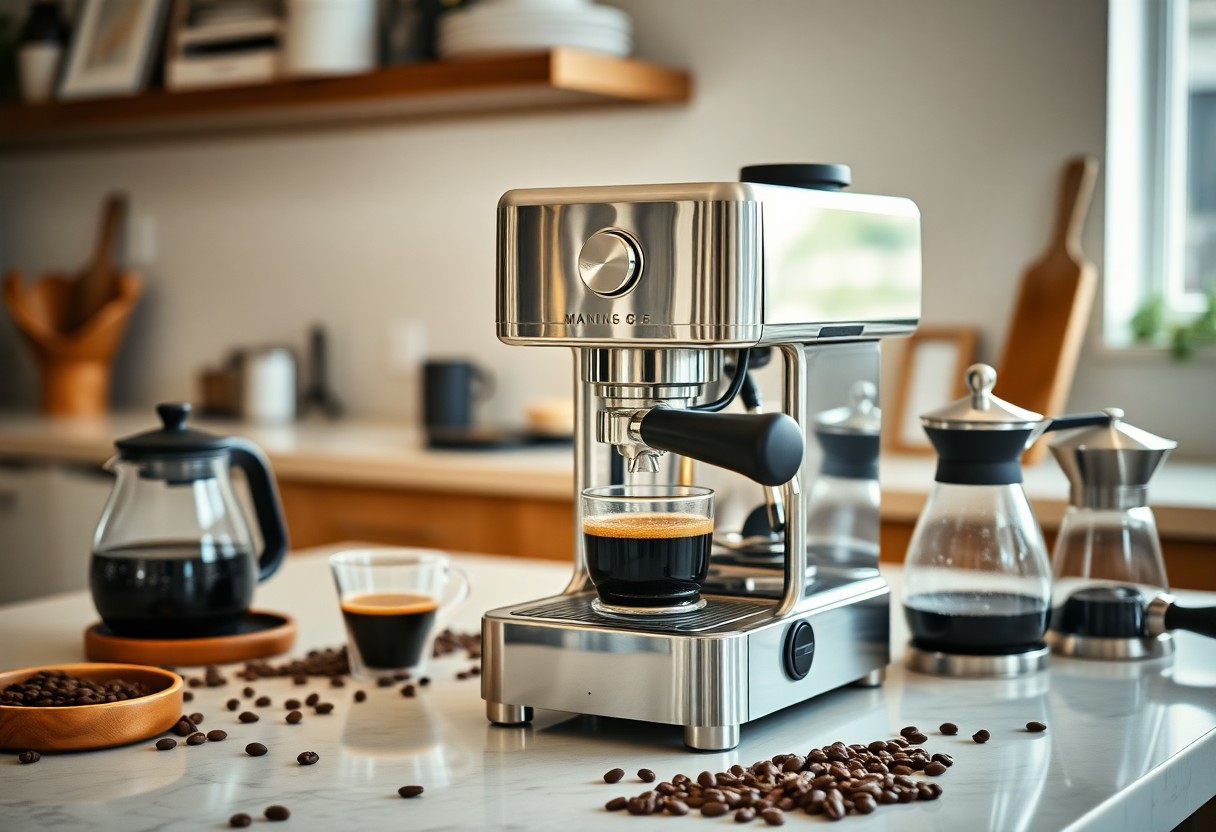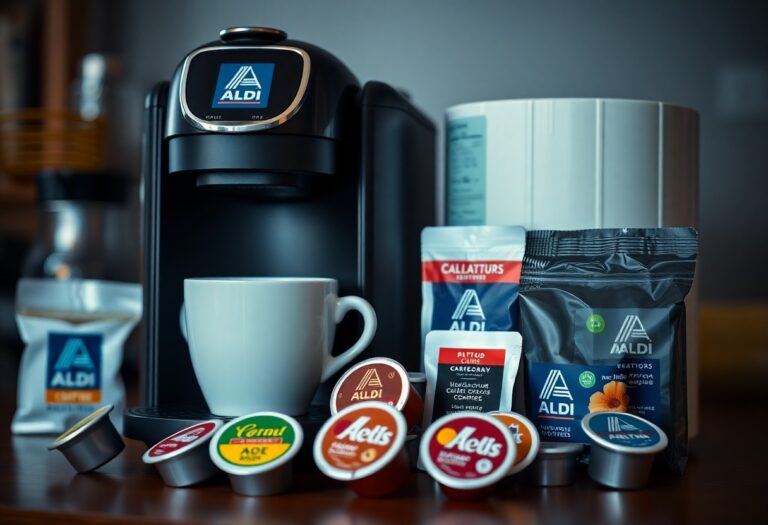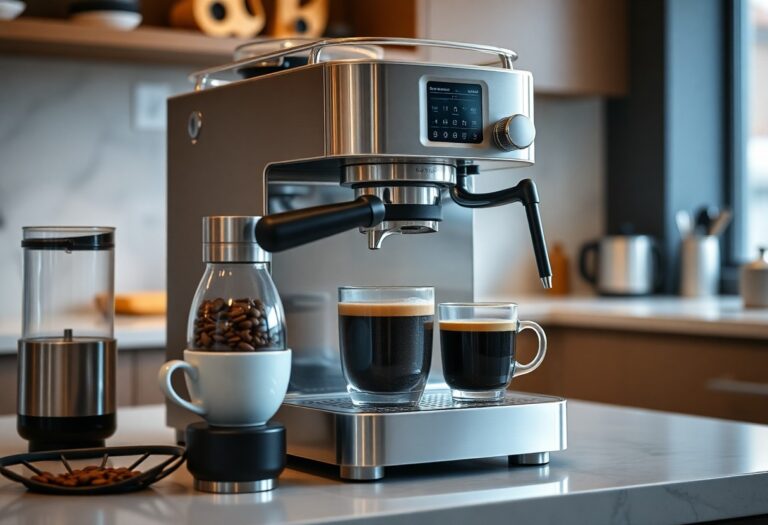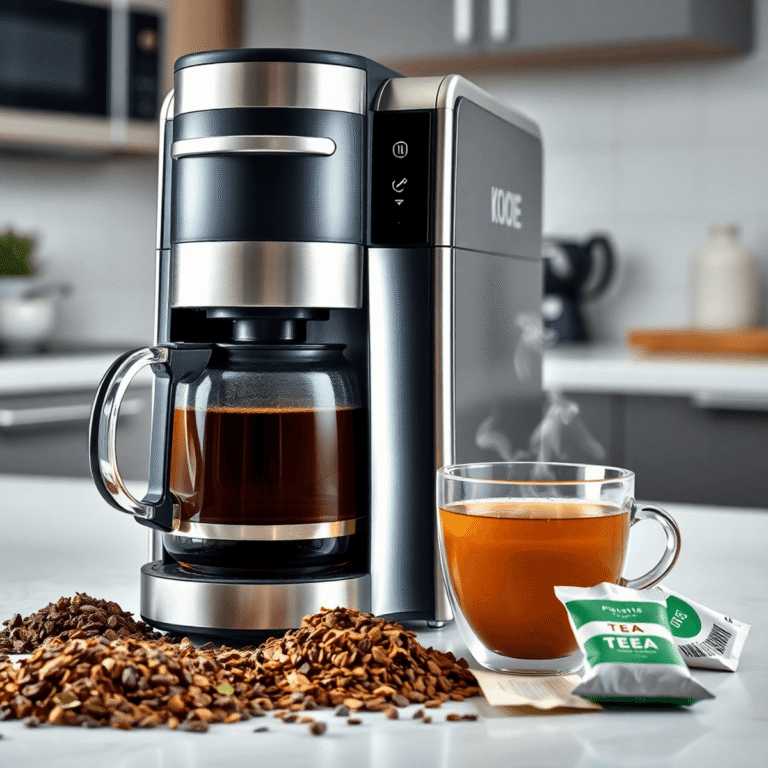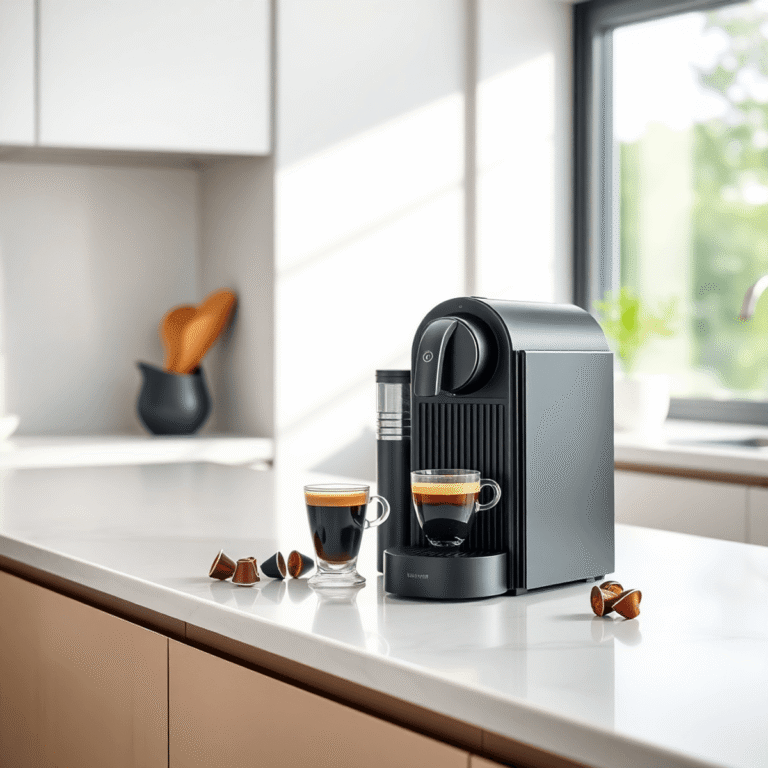What is the Best Manual Coffee Machine – Hands-On Brewing
Coffee enthusiasts like you know that the right equipment can make all the difference in your brewing experience. Choosing the best manual coffee machine not only elevates the taste of your coffee but also brings the artistry of brewing into your kitchen. With various options available, it’s imperative to understand what features matter most. In this guide, we’ll explore the benefits of manual brewing, imperative factors to consider, and how to find a machine that best suits your needs, ensuring you enjoy every cup you create.
Key Takeaways:
- A manual coffee machine allows for greater control over the brewing process, enabling customization of flavor and strength.
- Different manual brewing methods, such as pour-over, French press, and AeroPress, each yield distinct taste profiles.
- Quality of materials and craftsmanship can significantly impact the performance and durability of the manual coffee machine.
- Ease of use and cleaning are important factors to consider when selecting a manual coffee machine.
- Investing in a good quality grinder is crucial, as it enhances the overall coffee experience by achieving the right grind size for optimal extraction.
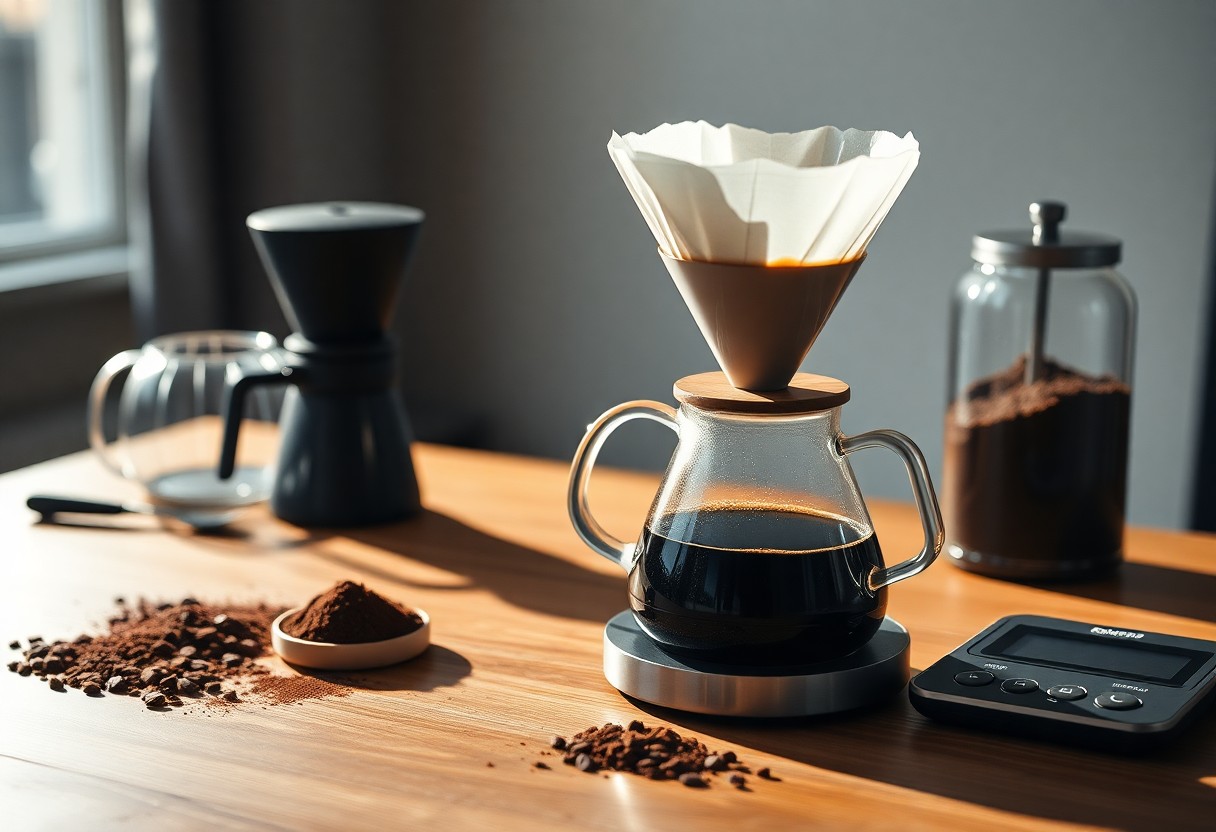
The Art of Manual Brewing: Beyond the Basics
Elevating your coffee-making experience requires a deeper appreciation for the nuances of manual brewing. It’s not merely about producing coffee; it’s about cultivating a skill that combines science, artistry, and personal expression. By honing your techniques, you can explore various brew methods, water temperatures, and grind sizes to tailor flavors that suit your palate. Dedicating time for experimentation transforms each brew into a unique journey, enhancing your understanding of the complex world of coffee.
Craftsmanship in Coffee Making
Mastering manual brewing is akin to fine craftsmanship; it demands patience and precision. Your choice of equipment, from grinders to pour-over cones, influences the outcome significantly. Each element—from your choice of beans to the brewing time—contributes distinct flavors and aromas. Taking the time to understand these factors cultivates not just a beverage but an artisanal experience that reflects your personality and taste.
The Ritual of Manual Coffee Preparation
Embracing the ritual of manual coffee preparation transforms your morning routine into a mindful practice. You begin by selecting fresh, high-quality beans, weighing them precisely to measure out the perfect dose. The grinding process brings out the aroma, invigorating your senses while you prepare. As you heat your water to the ideal temperature and pour it over the grounds, every step allows for momentary reflection, inviting you to savor the anticipation of that first sip.
This ritual is not just about making coffee; it’s a way to engage fully with the process. Each step, whether measuring the coffee or stirring, serves as a meditative pause in your day. The tactile feedback from the beans and the steam rising from the kettle heightens your connection to the beverage, allowing you to appreciate not only the taste but the effort and care involved in crafting your perfect cup. Ultimately, this mindful approach deepens your relationship with coffee, turning a simple drink into a cherished experience.
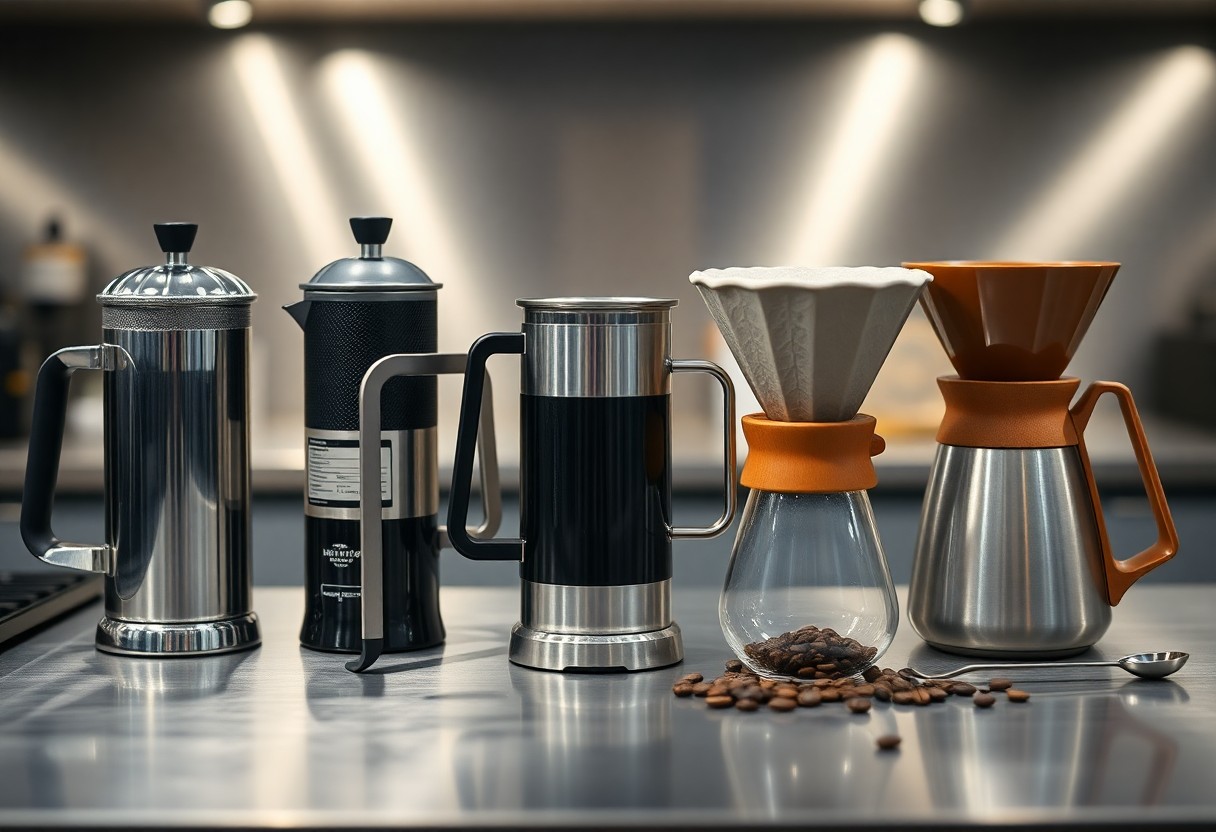
A Comparative Analysis of Top Manual Coffee Machines
In the vast world of coffee brewing, knowing how different manual coffee machines stack up against each other can help you make an informed choice. Each machine offers distinct advantages, catering to specific brewing preferences. For insights from fellow coffee lovers, check out this discussion on What’s the most best manual espresso maker suitable for ….
| Machine | Key Features |
|---|---|
| Machine A | Compact, lightweight, and easy to clean |
| Machine B | High pressure extraction, temperature stability |
| Machine C | Versatile brewing options, stainless steel construction |
Key Features That Matter
Understanding the key features of manual coffee machines ensures you choose one that fits your needs. Look for the following features:
- Portability: Ability to carry and use anywhere.
- Pressure Capability: Higher pressure for better extraction.
- Material Quality: Durable materials like stainless steel.
- Ease of Use: Simple operation for quick brewing.
- Maintenance: Quick cleanup process.
After considering these factors, you’ll have a clearer picture of what machine will elevate your coffee experience.
Performance and User Experience
When selecting a manual coffee machine, performance is a prominent factor. Machines with high pressure tend to extract richer flavors, while user experience can vary significantly based on design ergonomics and ease of use. Many users report that certain models feel intuitive, encouraging experimentation with different brewing techniques. Those who appreciate the tactile element of manual brewing often enjoy the connection established with their craft, which machines that prioritize user-friendly features and consistent results facilitate effectively. In essence, the right choice directly contributes to a satisfying and rewarding coffee ritual.
The Chemistry of Flavor: How Different Machines Affect Taste
The method you choose to brew your coffee significantly shapes its flavor profile. Each manual coffee machine operates under distinct principles that influence extraction rates, dissolution of oils, and overall taste. Factors like pressure, grind size, and brewing time interact together to create a rich tapestry of flavors in your cup. Understanding these nuances can enhance your brewing experience and help you tailor coffee to meet your taste preferences.
The Impact of Brewing Methods on Flavor Profile
Your brewing method plays a pivotal role in defining coffee’s flavor profile. Pour-over techniques emphasize clarity, allowing brighter notes to shine through, while espresso machines yield rich, creamy textures due to concentrated extraction. Each method excels at highlighting different beans’ characteristics, making it crucial to match your brewing approach to the specific coffee type for the most satisfying results.
Exploring Temperature and Extraction
Temperature significantly influences extraction levels, which in turn affects flavor. Generally, hotter water increases solubility, drawing out more flavors. However, too much heat can lead to over-extraction, resulting in bitterness. Conversely, lower temperatures may cause under-extraction, leading to a lack of depth. The sweet spot for most brews lies between 195°F and 205°F (90-96°C), allowing you to extract the right balance of acidity and sweetness.
| Temperature | Impacts solubility and dissolution rates of flavor compounds. |
| Over-extraction | Causes bitter and unpleasant flavors due to excessive brew time or temperature. |
| Under-extraction | Results in sour and weak flavors, often from low temperature or grind size issues. |
| Optimal Range | Brewing between 195°F and 205°F (90-96°C) produces balanced flavors. |
Adjusting the temperature within the right range allows you to experiment with the extraction process. For instance: if you find your coffee consistently tasting bitter, try lowering the water temperature or shortening the brew time. Alternatively, if your cup seems flat, a slight increase in temperature might enhance extraction, bringing forth the intricate flavors that define coffee’s allure. Each increment can unveil a different aspect of your brew to enjoy.
| Quality of Beans | Fresh, high-quality beans engage differently depending on temperature, revealing nuances. |
| Grind Size | Finer grinds extract more quickly, making temperature adjustments even more critical. |
Practical Tips for Perfect Manual Brewing
Mastering manual brewing encompasses a blend of art and science. Here are a few practical tips to enhance your brewing skills:
- Choose the right coffee beans based on your flavor preference.
- Pay attention to the grind size, as it affects extraction time.
- Maintain a consistent water temperature ideally around 200°F (93°C).
- Experiment with the brewing time to achieve your desired strength.
- Utilize a scale for accurate coffee-to-water ratio.
Recognizing these fundamentals not only improves your method but also enhances your overall coffee experience.
Mastering Grind Size and Water Ratio
Achieving the right grind size and water ratio is crucial for producing a balanced cup. A finer grind will increase extraction, while a coarser grind may lead to under-extraction. Aim for a general guideline of 1:15 for coffee to water ratio, adjusting based on personal taste. For instance, if you’re using 20 grams of coffee, you’ll want to pour in about 300 grams of water.
Techniques for Consistent Brewing
A consistent brewing technique can significantly influence your coffee’s flavor profile. Use methods such as the bloom technique, which involves wetting the grounds before brewing, allowing gases to escape and flavor to develop more fully. Additionally, try using a timer to standardize your brew, ensuring you invest the same amount of time for each coffee making session. Pouring technique also matters; a slow, circular motion supports even extraction.
To further enhance consistency, always begin with filtered water, as impurities can alter flavor. Using the same scale to measure both coffee and water guarantees accurate ratios across different brews. Chefs often implement these techniques with precision, and you can do the same. Experiment with various pouring speeds and patterns to observe how they influence taste. By recording your processes, you create a repeatable method that not only delivers flavorful results but also hones your skills over time.
Testimonials: Real Experiences from Coffee Enthusiasts
Hearing from fellow coffee enthusiasts adds depth to the discussion about manual coffee machines. Users report significant improvements in flavor and aroma when switching to manual brewing methods. Personal stories reveal a sense of pride and enjoyment in crafting the perfect cup. Many express that the tactile experience of brewing allows for better control over variables like grind size, water temperature, and extraction time, resulting in a coffee that truly resonates with their individual tastes.
Enthusiast Reviews of Top Models
Coffee lovers frequently rave about models like the Aeropress and the Hario V60 for their versatility and ease of use. Enthusiasts highlight how the Aeropress delivers *consistently smooth* coffee with minimal waste, while the Hario V60’s drip design allows for *precise control* over the brewing flow rate. They often share tips on achieving optimal results, underscoring the community aspect behind manual coffee making where shared experiences lead to richer flavors.
Lessons Learned from Different Brewing Styles
Exploring various manual brewing techniques reveals a myriad of lessons that transform your coffee experience. From the precision of pour-over to the robust flavor profile of the French press, each method emphasizes different aspects of extraction and water interaction, enriching your understanding of what goes into making that perfect cup.
Diving deeper into brewing styles offers valuable insights into how techniques can influence flavor. For instance, many users find that their preference leans toward the clean taste of a pour-over versus the fuller body of a French press. Experimenting with water temperature and grind size during these processes can yield surprising results, teaching you to tailor your approach based on personal palate preferences. This journey not only enhances your coffee-making skills but also fosters a greater appreciation for the craft as a whole.
Conclusion
Drawing together your exploration of manual coffee machines, you now have a clearer idea of what might suit your brewing style best. Selecting the right machine can greatly enhance your coffee experience, allowing you to interact with each brewing step. Whether you prefer the simplicity of a French press or the precision of a pour-over, your choice will reflect your personal taste. Engage with fellow coffee enthusiasts and share your thoughts on What is your favourite “manual” brewing method? : r/Coffee for more insights!
FAQ: What is the Best Manual Coffee Machine – Hands-On Brewing
Q: What are the benefits of using a manual coffee machine over an automatic one?
A: Manual coffee machines, such as pour-over devices and espresso makers, offer a more hands-on experience that allows for greater control over the brewing process. Users can manipulate variables such as water temperature, brew time, and grind size, leading to a custom cup of coffee tailored to personal taste. Additionally, manual methods often enhance the appreciation of the coffee-making process and can lead to a deeper connection with the beverage itself.
Q: What should I look for in a high-quality manual coffee machine?
A: When selecting a manual coffee machine, consider factors such as build quality, ease of use, and size. A well-constructed device will not only last longer but also provide consistent results. Evaluate how user-friendly the machine is, especially if you are a beginner. Additionally, consider the machine’s footprint; it should fit your kitchen space comfortably while still meeting your brewing needs.
Q: Are there specific types of coffee beans that work best with manual coffee machines?
A: While you can use various coffee beans with manual coffee machines, the choice often depends on the brewing method and personal preference. For pour-over and French press, medium to coarse grinds made from high-quality Arabica beans tend to yield optimal results. For espresso machines, a fine grind of freshly roasted beans will produce the best flavor and crema. Experimenting with different beans can help you discover what suits your taste best.
Q: How do I maintain my manual coffee machine to ensure longevity?
A: Regular maintenance is vital for the longevity of any coffee machine. For manual devices, make sure to clean them after each use by rinsing and removing any coffee residue. For deeper cleaning, follow manufacturer guidelines which may recommend using a specialized cleaning solution or vinegar solution periodically. Additionally, descaling your machine if it uses hot water will prevent mineral buildup and keep your coffee tasting fresh.
Q: Can I make different types of coffee drinks with a manual coffee machine?
A: Yes, many manual coffee machines can brew a variety of coffee drinks. For instance, an espresso machine can be used to create espresso shots, lattes, cappuccinos, and even Americanos with the right techniques and attachments. Pour-over devices can produce flavorful coffee to enjoy black or enhance with milk and syrups. Experimenting with different techniques will allow you to enjoy a versatile coffee experience from a single manual machine.

